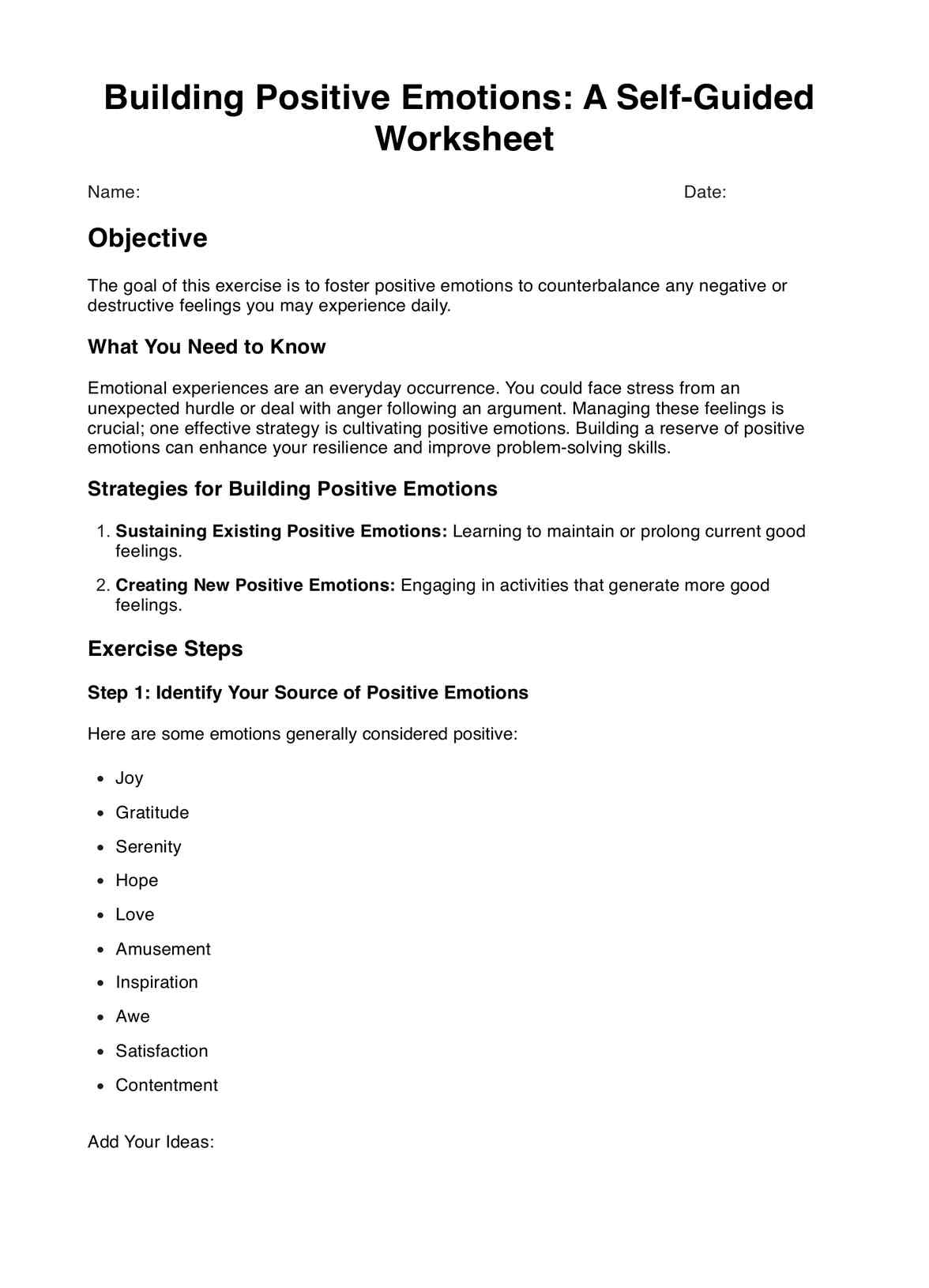The time varies depending on individual circumstances, but it usually takes 20 to 60 minutes.

Building Positive Emotions DBT Worksheet
Unlock emotional balance and resilience with our Building Positive Emotions DBT Worksheet. Ideal for both professionals and individuals aiming for emotional well-being.
Use Template
Building Positive Emotions DBT Worksheet Template
Commonly asked questions
The worksheet provides a structured approach to identifying, cultivating, and sustaining positive emotions, thereby improving emotional resilience and psychological well-being.
Anyone looking to understand better their emotional landscape can benefit from this worksheet. It's beneficial for healthcare professionals as part of a broader therapeutic regimen.
EHR and practice management software
Get started for free
*No credit card required
Free
$0/usd
Unlimited clients
Telehealth
1GB of storage
Client portal text
Automated billing and online payments











